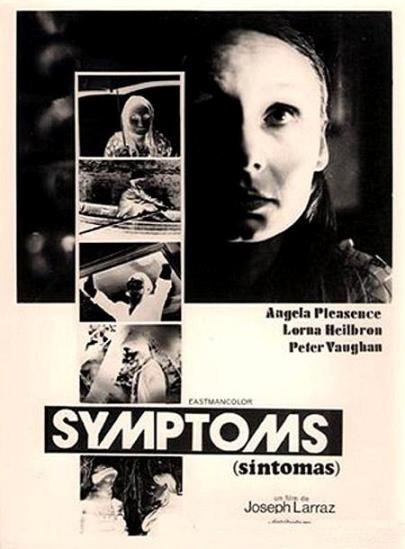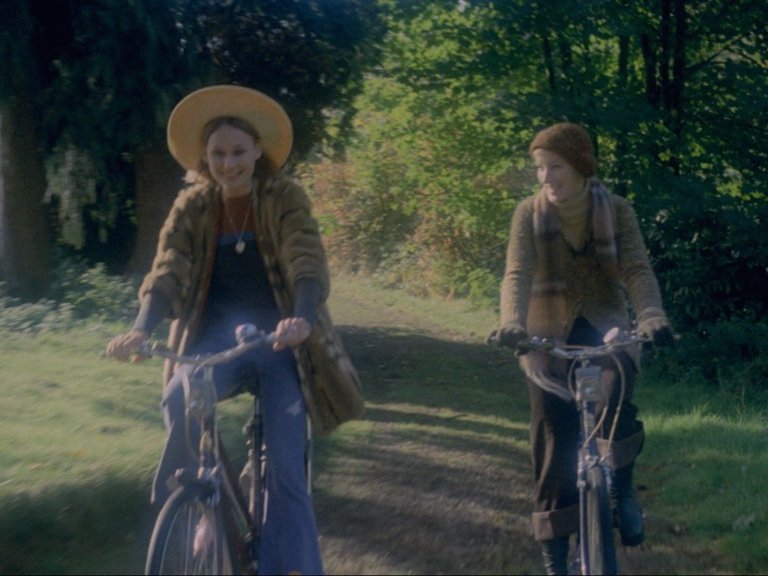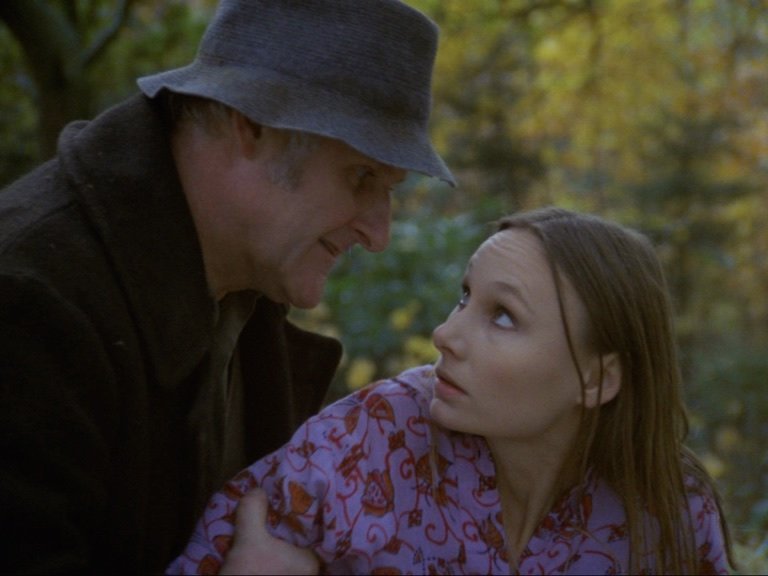SYMPTOMS: Taking A Psychotic Break In The Countryside
1974 saw the release of two films that would define the career of director Jose Ramon Larraz. The first and best known is Vampyres, a distinctive mix of the artsy and visceral that many consider to be the best of the "lesbian vampire" subgenre. The other, lesser-known film is Symptoms, a lost classic that was considered important enough in its time to represent Britain at the Cannes Film Festival but slipped into obscurity afterwards. The  latter film deserves to be rediscovered because it is the opposite of Vampyres in methodology while being an equal in terms of aesthetic quality.Symptoms takes a gothic horror approach as it sets up its premise: Anne (Lorna Heilbron) leaves behind a faltering romance in the city to visit a country estate owned by her quirky, fragile friend Helen (Angela Pleasance). Helen is a troubled soul who claims to have extrasensory feelings and is rather possessive towards her friend. Adding complication is the fact that the house itself is creepy, complete with odd locked-off areas and mysterious voices late at night. There is also a creepy caretaker (Peter Vaughan) who claims to know secrets about the place and takes a sleazy interest in the women. Helen begins to slip into madness as the house reveals its secrets, bringing danger for everyone involved.Those accustomed to the blood-and-bosoms excesses of Larraz's Vampyres might be shocked by how subtle a film Symptoms is: despite a couple of knife kills that bring back fond memories of Vampyres, much of the film is devoted to quietly building a suffocating atmosphere of dread. Larraz keeps his style lavish, with Trevor
latter film deserves to be rediscovered because it is the opposite of Vampyres in methodology while being an equal in terms of aesthetic quality.Symptoms takes a gothic horror approach as it sets up its premise: Anne (Lorna Heilbron) leaves behind a faltering romance in the city to visit a country estate owned by her quirky, fragile friend Helen (Angela Pleasance). Helen is a troubled soul who claims to have extrasensory feelings and is rather possessive towards her friend. Adding complication is the fact that the house itself is creepy, complete with odd locked-off areas and mysterious voices late at night. There is also a creepy caretaker (Peter Vaughan) who claims to know secrets about the place and takes a sleazy interest in the women. Helen begins to slip into madness as the house reveals its secrets, bringing danger for everyone involved.Those accustomed to the blood-and-bosoms excesses of Larraz's Vampyres might be shocked by how subtle a film Symptoms is: despite a couple of knife kills that bring back fond memories of Vampyres, much of the film is devoted to quietly building a suffocating atmosphere of dread. Larraz keeps his style lavish, with Trevor  Wrenn's cinematography creating an ironically lovely backdrop for the quietly horrific tale and John Scott composing a lush score. However, this aesthetic is used to build a hypnotic mood that puts a focus on atmosphere and character building.The result is deliberately paced but pays off as Larraz gradually ratchets up the chills. Symptoms is a story about the dangers of repression and disconnection so it makes perfect sense that Larraz went in the opposite direction of Vampyres to create a movie that thrives on the tension of things heard or perceived but not directly seen. The second half particularly pays off with some wonderfully tense scenes, including a great little setpiece where one character is snooping around in a dark room only to realize someone has snuck in to put an end to the snooping.
Wrenn's cinematography creating an ironically lovely backdrop for the quietly horrific tale and John Scott composing a lush score. However, this aesthetic is used to build a hypnotic mood that puts a focus on atmosphere and character building.The result is deliberately paced but pays off as Larraz gradually ratchets up the chills. Symptoms is a story about the dangers of repression and disconnection so it makes perfect sense that Larraz went in the opposite direction of Vampyres to create a movie that thrives on the tension of things heard or perceived but not directly seen. The second half particularly pays off with some wonderfully tense scenes, including a great little setpiece where one character is snooping around in a dark room only to realize someone has snuck in to put an end to the snooping. Symptoms also shows Larraz's ability to get strong performances: Heilbron makes a likeable audience identification figure but it's Pleasance who sets the tone with her skillfully observed portrait of a fragile, childlike woman who struggles to keep control over her desires and frustrations. She's riveting and yet so understated she makes it look effortless, evoking a high level of emotional intensity with the subtlest facial expressions. Vaughan is also quite good as the caretaker, evoking a sinister quality without overdoing it and offsetting the creepy touches with an enigmatic quality that draws the audience in.In short, Symptoms is a gem of quiet horror. It shows that Larraz was as skillful at subtle chills as he was the more flamboyant variety - and any fan of gothic creepiness will find plenty of decadently dark atmosphere to feast on here.
Symptoms also shows Larraz's ability to get strong performances: Heilbron makes a likeable audience identification figure but it's Pleasance who sets the tone with her skillfully observed portrait of a fragile, childlike woman who struggles to keep control over her desires and frustrations. She's riveting and yet so understated she makes it look effortless, evoking a high level of emotional intensity with the subtlest facial expressions. Vaughan is also quite good as the caretaker, evoking a sinister quality without overdoing it and offsetting the creepy touches with an enigmatic quality that draws the audience in.In short, Symptoms is a gem of quiet horror. It shows that Larraz was as skillful at subtle chills as he was the more flamboyant variety - and any fan of gothic creepiness will find plenty of decadently dark atmosphere to feast on here.


